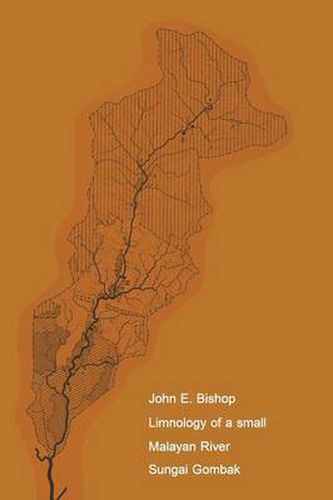Readings Newsletter
Become a Readings Member to make your shopping experience even easier.
Sign in or sign up for free!
You’re not far away from qualifying for FREE standard shipping within Australia
You’ve qualified for FREE standard shipping within Australia
The cart is loading…






This title is printed to order. This book may have been self-published. If so, we cannot guarantee the quality of the content. In the main most books will have gone through the editing process however some may not. We therefore suggest that you be aware of this before ordering this book. If in doubt check either the author or publisher’s details as we are unable to accept any returns unless they are faulty. Please contact us if you have any questions.
Rivers are recognized as major natural resources, not only as sources of domestic, industrial and agricultural water and hydro-electric power, but also for food production and increasingly for recreation and tourist promotion. This awareness has led to increased study of lotic limnology, particularly with respect to the development of the potentials of river systems. The concern over deterioration of watercourses as a result of poor land utilization and their use as repositories for man’s rejectamenta has stimulated research into the basic dynamics of the river environment and its biotic communities. Before any assessment of pollution effects can be made, or rational remedial action suggested, there must be a sound, detailed knowledge of the ‘natural’ characteristics of regional water courses as a reference standard. This knowledge can result only from investigating the whole drainage area as a unit ecosystem (E VANS 1956) rather than just the specific conditions in the river itself (cf. SLACK 1955, HYNES 1969). Biotic data for any stream are of little value if divorced from consideration of the geology, hydrochemistry, land use and nutrient cycles of the watershed that generated them. The study of large rivers, potamobiology in the sense of I LLIES (1955, 1961 a), is a specialized area of research merging into lenitic ecology in many aspects and cannot be considered here.
$9.00 standard shipping within Australia
FREE standard shipping within Australia for orders over $100.00
Express & International shipping calculated at checkout
This title is printed to order. This book may have been self-published. If so, we cannot guarantee the quality of the content. In the main most books will have gone through the editing process however some may not. We therefore suggest that you be aware of this before ordering this book. If in doubt check either the author or publisher’s details as we are unable to accept any returns unless they are faulty. Please contact us if you have any questions.
Rivers are recognized as major natural resources, not only as sources of domestic, industrial and agricultural water and hydro-electric power, but also for food production and increasingly for recreation and tourist promotion. This awareness has led to increased study of lotic limnology, particularly with respect to the development of the potentials of river systems. The concern over deterioration of watercourses as a result of poor land utilization and their use as repositories for man’s rejectamenta has stimulated research into the basic dynamics of the river environment and its biotic communities. Before any assessment of pollution effects can be made, or rational remedial action suggested, there must be a sound, detailed knowledge of the ‘natural’ characteristics of regional water courses as a reference standard. This knowledge can result only from investigating the whole drainage area as a unit ecosystem (E VANS 1956) rather than just the specific conditions in the river itself (cf. SLACK 1955, HYNES 1969). Biotic data for any stream are of little value if divorced from consideration of the geology, hydrochemistry, land use and nutrient cycles of the watershed that generated them. The study of large rivers, potamobiology in the sense of I LLIES (1955, 1961 a), is a specialized area of research merging into lenitic ecology in many aspects and cannot be considered here.